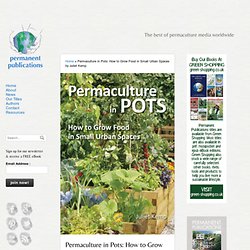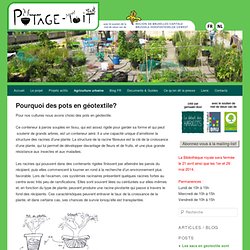

Permaculture in Pots: How to Grow Food in Small Urban Spaces by Juliet Kemp. Home»Permaculture in Pots: How to Grow Food in Small Urban Spaces by Juliet Kemp Permaculture in Pots: How to Grow Food in Small Urban Spaces by Juliet Kemp As demand far outstrips supply for allotments, Permaculture in Pots shows you how to get started with whatever space you have available – appealing to those who feel powerless to meet their own subsistence needs through lack of growing space.

In these times of soaring food prices, growing food in cities is becoming the big urban trend. Month by month we learn what to grow on a balcony or in a container garden, using low impact permaculture principles. It doesn’t matter when you pick up the book and start your journey of container gardening – wherever you are in the year, open the book to that chapter, and it’ll tell you what you should be doing.
Accueil. Pourquoi les pots en géotextile? Pour nos cultures nous avons choisi des pots en géotextile.

Ce conteneur à parois souples en tissu, qui est assez rigide pour garder sa forme et qui peut soutenir de grands arbres, est un conteneur aéré. Il a une capacité unique d’améliorer la structure des racines d’une plante. La structure de la racine fibreuse est la clé de la croissance d’une plante, qui lui permet de développer davantage de fleurs et de fruits, et une plus grande résistance aux insectes et aux maladies. Les racines qui poussent dans des contenants rigides finissent par atteindre les parois du récipient, puis elles commencent à tourner en rond à la recherche d’un environnement plus favorable. Lors de l’examen, ces systèmes racinaires présentent quelques racines fortes au centre avec très peu de ramifications.
Le début des haricots. Potagers sur les toits à Bruxelles.